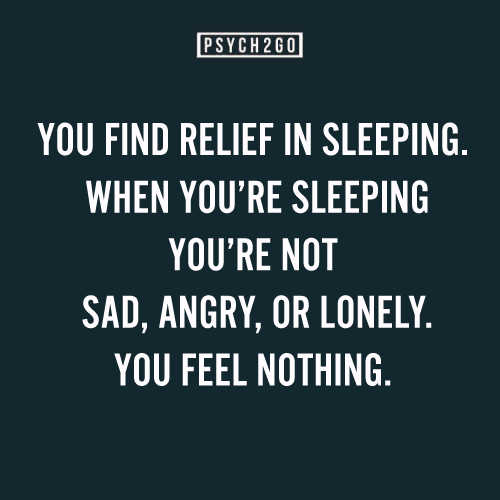Following Trauma

Following Trauma
More than 2.6 million servicemen and women have deployed to Iraq or Afghanistan since September 11, 2001. Many veterans return home from their service with symptoms of post-traumatic stress, depression, chronic pain and traumatic brain injury. These symptoms are also common among civilian trauma survivors.
Now researchers from Harvard Medical School and other institutions will embark on a five-year-long project, the Aurora study, to better understand and treat these disorders. The research will utilize the efforts of 19 institutions and more than 40 scientists.
Trauma survivors will be enrolled in the study in the immediate aftermath of trauma and followed longitudinally for one year using sophisticated adaptive sampling methods to perform a comprehensive, state-of-the-art assessment of genomic, neuroimaging, physiologic, neurocognitive, psychophysical, behavioral and self-report markers.
In addition to its unparalleled scope, the study differs from previous studies in that it will assess neuropsychiatric effects of trauma broadly rather than focus on only one or a few diseases.
“We want to be patient-centered and not diagnosis-centered,” said Samuel McLean, lead principal investigator of the study and an emergency medical physician at the University of North Carolina at Chapel Hill.
Read more
Funding: The five-year-long project is funded by the National Institute of Mental Health.
Raise your voice in support of expanding federal funding for life-saving medical research by joining the AAMC’s advocacy community.
More Posts from Sordidsass-blog and Others


Chronic illness, chronic pain, and mental illnesses can create a sense of low energy in those who suffer from them.
The spoon theory is a way to discuss the use of energy in tasks as a kind of currency. People who do not have energy draining conditions have, in theory, infinite spoons to expend on whatever they please. People who have chronic conditions may awake with 10, 5, or 2 spoons on any given day.

Today is World AIDS Day, and we’ve still got a lot of work to do.
A stat that gets me every time: “If current diagnosis rates continue, 1 in 6 gay and bisexual men will be diagnosed with HIV in their lifetime, including 1 in 2 black/African American gay and bisexual men, 1 in 4 Hispanic/Latino gay and bisexual men, and 1 in 11 white gay and bisexual men.”
One of the most important things you can do is get tested and know your status; here’s a tool that can help you find a nearby testing site. Note that the option for selecting your gender isn’t quite right, but the wealth of testing locations in their database is still helpful.
If you’re in a donating mood, you can also support the work of some organizations doing excellent things for those affected by HIV/AIDS, including GMHC, AIDS United, Planned Parenthood, Lambda Legal and amfAR. (And please add your favorites; there are so many!)
We’ve been fighting this fight for upwards of 30 years. We’re not stopping now.

Graphics created by: @eclecticjessica




You should share this for people in DC and close to you!!
Black Community we have to be careful. Protect our Girls! Spread this!
Are two people who disassociate together disassociates?






Yale professor Timothy Snyder explains how democracies fall.
One of the best examples of abled people taking it upon themselves to advocate for the disabled community while simultaneously ignoring the voices of people with disabilities until they’ve made things worse is the “new” international symbol of access.

The original, established, symbol is on the left and the “new” symbol is on the right.
So what’s the problem?
Well, the biggest problem is that the newest symbol wasn’t designed by someone in a wheelchair. It was designed by two artists who don’t use wheelchairs who thought that they could speak on behalf of people who do.
Who cares, it’s a good symbol, right?
Nope.
See the original symbol, the one that’s been around for decades and has been embraced by the disabled community, works for both people in manual wheelchairs and people in electric wheelchairs. The second one is obviously someone in a manual chair, excluding those who use electric ones.
There’s also ironically an ableist message behind their reasoning that the person on the right symbolizes an active member of society, whereas the non-moving person on the right can be depicted as lazy. This reasoning is extremely ableist and ignorant, artsy for the sake of being artsy without giving thought to what they’re actually implying.
The real kicker?
My college has the new signs everywhere. New York State as a whole adopted these new signs. A ton of different buildings around the nation are putting up these new signs because people are just sort of assuming that everyone with a disability approves, even though most people in wheelchairs are objecting to it and the people who are advocating for it aren’t in wheelchairs in the first place.
And guess whose voices are the ones being heard?
And guess whose voices are the ones being ignored?







I wanted to post this from my other blog and I think it’s important that other people learn what SPD really is so they can notice it and catch it early. It’s not easy to have this and my everyday life can be hard some days but other days it’s much easier. Please educate yourself and others about SPD so you can help them if they need it.
This is exactly why I was terrified, and still am.




Stay safe. Fight back. And sit tight because these next 4 years are gonna be one hell of a ride.
-
 kreeb80 liked this · 5 years ago
kreeb80 liked this · 5 years ago -
 fresalita reblogged this · 7 years ago
fresalita reblogged this · 7 years ago -
 nigga-wheres-my-lighter liked this · 8 years ago
nigga-wheres-my-lighter liked this · 8 years ago -
 simplyaliek liked this · 8 years ago
simplyaliek liked this · 8 years ago -
 ottosientto reblogged this · 8 years ago
ottosientto reblogged this · 8 years ago -
 psychebabblemumbojumbo reblogged this · 8 years ago
psychebabblemumbojumbo reblogged this · 8 years ago -
 redhousehead liked this · 8 years ago
redhousehead liked this · 8 years ago -
 nekoeka reblogged this · 8 years ago
nekoeka reblogged this · 8 years ago -
 herobinson-blog1 liked this · 8 years ago
herobinson-blog1 liked this · 8 years ago -
 kintsu-blog liked this · 8 years ago
kintsu-blog liked this · 8 years ago -
 joeytanseeyee-blog liked this · 8 years ago
joeytanseeyee-blog liked this · 8 years ago -
 hijab-proudness reblogged this · 8 years ago
hijab-proudness reblogged this · 8 years ago -
 hijab-proudness liked this · 8 years ago
hijab-proudness liked this · 8 years ago -
 zeinstuff liked this · 8 years ago
zeinstuff liked this · 8 years ago -
 downtheaxon liked this · 8 years ago
downtheaxon liked this · 8 years ago -
 notdaylighteyes liked this · 8 years ago
notdaylighteyes liked this · 8 years ago -
 recovering-and-healing reblogged this · 8 years ago
recovering-and-healing reblogged this · 8 years ago -
 deathmet-al liked this · 8 years ago
deathmet-al liked this · 8 years ago -
 leftfootism liked this · 8 years ago
leftfootism liked this · 8 years ago -
 mgp0592-blog liked this · 8 years ago
mgp0592-blog liked this · 8 years ago -
 rinkaldesai-blog liked this · 8 years ago
rinkaldesai-blog liked this · 8 years ago -
 epiphanicwiring liked this · 8 years ago
epiphanicwiring liked this · 8 years ago -
 bakerstreetviolin liked this · 8 years ago
bakerstreetviolin liked this · 8 years ago -
 neuroanatomy reblogged this · 8 years ago
neuroanatomy reblogged this · 8 years ago -
 amsinckia liked this · 8 years ago
amsinckia liked this · 8 years ago -
 severestarfishnerd liked this · 8 years ago
severestarfishnerd liked this · 8 years ago -
 sordidsass-blog reblogged this · 8 years ago
sordidsass-blog reblogged this · 8 years ago -
 sordidsass-blog liked this · 8 years ago
sordidsass-blog liked this · 8 years ago -
 skrumply liked this · 8 years ago
skrumply liked this · 8 years ago -
 theneuroscienceside-blog reblogged this · 8 years ago
theneuroscienceside-blog reblogged this · 8 years ago -
 oxytocindolorosa reblogged this · 8 years ago
oxytocindolorosa reblogged this · 8 years ago -
 bonbonusagi reblogged this · 8 years ago
bonbonusagi reblogged this · 8 years ago -
 agirlhasn0n4mesworld liked this · 8 years ago
agirlhasn0n4mesworld liked this · 8 years ago -
 texasdreamer01 reblogged this · 8 years ago
texasdreamer01 reblogged this · 8 years ago
Struggling with mental illness after a traumatic event most likely caused by mental illness. Sexual Assault Survivor.
282 posts